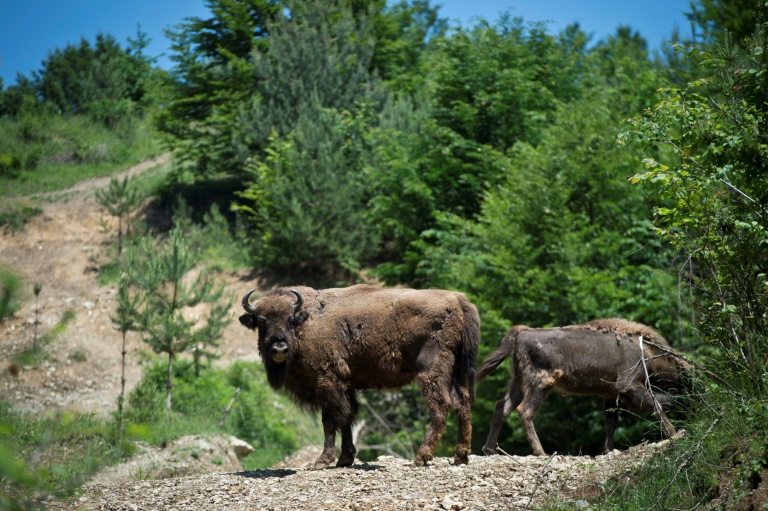
ARMENIS (ROMANIA) - Hoof prints in the mud, tree bark nibbled away: even if the newest residents of Romania's Carpathian mountain forest shy away from visitors, their traces are there for those who know where to look.
They are signs of the success of a project to reintroduce bison to this region after a centuries-long absence, key to keeping the hairy giants off lists of critically endangered species.
Bison had all but been driven out of Europe by hunting and the destruction of its habitats, but their reappearance in Romania has brought back a key component of the region's ecosystem.
Under gentle autumn sunshine on the edge of a centuries-old wood, young forest warden Matei Miculescu is on the lookout for members of the Carpathian herd.
The animals can be hard to spot, having been tempted further into the forest by the abundant vegetation and the possibility of extending their habitat.
Miculescu says the animals are thriving in the forest, in contrast to captivity which "creates the risk of inbreeding" and weakens their chances of survival.
Nowadays, around 6,000 bison, Europe's largest mammal and a distant cousin of the American buffalo, can be found on the continent.
Most of them are on the Polish-Belarussian border where efforts to revive the population got underway in the 1950s.
Romania welcomed bison back in 2014 in the southwestern Armenis region, more than 200 years after it was last seen there.
Born in captivity in other parts of Europe -- where they had been given names like Kiwi, Bilbo and Mildred -- they were transferred to Romania in 16 separate stages.
- Cutting human links -
Thanks to successful reproduction in the wild, "around 105 bison now live freely in the Tarcu mountains and have settled in well," says Marina Druga, head of the project led jointly by the WWF and Rewilding Europe.
"In the past two years, there haven't been any deaths in their ranks," says Druga, explaining that the goal is to get to a population "of 250 individuals in five years' time".
The programme is well established: first the animals spend several weeks being re-acclimatised to life in the wild and are only then released and left to fend for themselves.
They can currently be found making use of around 8,000 hectares in a protected area which stretches over 59,000 hectares.
The southern Carpathians present ideal conditions: "a vast region with a thinly spread human population and no intensive agriculture," says Wanda Olech-Piasecka from the International Union for Conservation of Nature (IUCN).
Since 2014 there have been 38 bison calves born in the area.
"Without them, the project would have no future," says Miculescu, who recognises each of the creatures by their horns of the colour of their fur.
But those running the project have resisted giving the calves names.
Since they have been born in the wild, all links with humans should be cut, explains Druga.
- Architects of the forest -
The WWF says the next step to make the population viable in the long term will be to introduce bison into other parts of the Carpathians and establish a network of populations.
Over the long term, the animals need a large habitat in order avoid conflict over territory with human populations or within their own herds.
Along with benefitting the bison themselves, advocates say that this example of "rewilding" is also a boon for the wider ecosystem, bringing benefits for some 600 species from microorganisms to large carnivores.
"They change the landscape and architecture of the forest by stopping the spread of invasive tree species, spreading seeds for hundreds of plants and creating paths smaller animals use to access food," explains Druga.
Weaker or sick members of the herd can themselves serve as prey for wolves or bears, who in turn will be less likely to stray into human settlements in search of food, a problem which has grown in recent years in Romania.
Even those who watch them closely have sometimes been surprised by the effects the bison's presence can have.
"Birds collect discarded bits of fur to isolate their nests while frogs can use bison hoof prints to jump from one pond to another," says Miculescu.